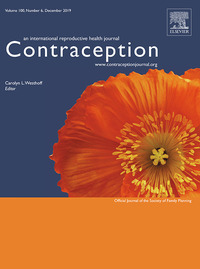About the study
Published in Contraception

Objective: To assess an alternative method for estimating demand for postpartum tubal ligation and evaluate reproductive trajectories of low-income women who did not obtain a desired procedure.
Study Design: In a two-year cohort study of 1,700 publicly insured women who delivered at eight hospitals in Texas, we identified those who had an unmet demand for tubal ligation prior to discharge from the hospital. We classified unmet demand as explicit or prompted based on survey questions that included a prompt regarding whether the respondent would like to have had a tubal ligation at the time of delivery. We assessed persistence of demand for permanent contraception, contraceptive use, and repeat pregnancies among all study participants who wanted but did not get a postpartum procedure.
Results: Some 426 women desired a postpartum tubal ligation; 219 (51%) obtained one prior to discharge. Among the 207 participants with unmet demand, 62 (30%) expressed an explicit preference for the procedure, while 145 (70%) were identified from the prompt. Most with unmet demand still wanted permanent contraception three months after delivery (156/184), but only 23 had obtained interval procedures. By 18 months, the probability of a woman with unmet demand conceiving a pregnancy that she would likely carry to term was 12.5% (95% C.I.: 8.3% - 18.5%).
Conclusion: The majority of unmet demand for postpartum tubal ligation among publicly insured women in Texas was uncovered via a prompt and would not have been evident in clinical records or from consent forms. Women unable to obtain a desired procedure had a substantial chance of pregnancy within 18 months after delivery.
